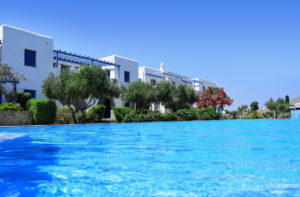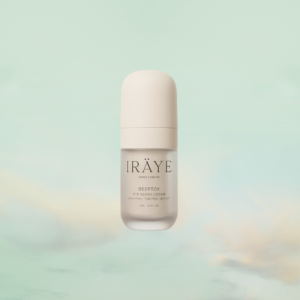Expert advice: How to avoid and treat skin damage from PPE and mandatory mask wearing

For the first time ever, wearing a face mask in UK shops and supermarkets will become mandatory from July 24th, as well as on public transport.
Wearing face masks or face coverings in public places will inevitably become the new norm. And we’ve all seen the images circulating on social media showing angry reddened skin, sores, blisters and bruising from wearing face masks to protect against the virus.
To help us protect our skin and prevent skin damage from wearing PPE more regularly, GP and aesthetic doctor for skin-tech brand FOREO Dr. Raj Arora shares her top tips and advice.
- Apply a protective barrier cream such as ‘Cavilon Barrier Film’, an alcohol free, hypoallergenic topical cream. It can act as a protective layer between the skin and the PPE mask. This will help to reduce irritation and sores from continual applied pressure.
- Maintain a simple and consistent skin routine. Cleanse with a calming/soothing cleanser. For a deeper yet gentler cleanse, the LUNA 3 by FOREO removes 99.5% of dirt, oil and sweat and has massage modes which help alleviate sore skin.
- Omit aggressive skin care ingredients such as retinol or exfoliating acids as these can leave the skin sensitive and more prone to chafing/breakdown when continued pressure is applied.
- Add a protective paraffin based ointment to your skincare routine such as Epaderm or Vaseline to help protect irritated/sore areas of the skin.
- Hydration is also key. The skin’s barrier is the outermost layer of the skin (stratum corneum) and it shields skin from bacteria and irritants. It also seals in moisture and hydration. To ensure the barrier is healthy, it is important to drink plenty of fluid throughout the day (at least 2 litres). Additionally, FOREO’s UFO 2 and Farm to Face masking collection can help calm and hydrate your skin. This will allow our skin barrier to remain well hydrated, moisturised and resilient.
- For those with sensitive skin, ensure you are following a skin routine. After removing the mask, gently wash the face with a calming cleanser such as Sensicalm from Alumier. Moisturise using a ceramide based moisturiser. Follow up with any barrier creams/ointments to any particularly sensitive or sore areas.
- To help treat any nasty bruising from the masks ensure that you have a diet rich in Vitamin C as this is essential for collagen production. Collagen encourages the renewal of cells and therefore helps repair wounds on the skin.
- In areas that are particularly sore – you could use a sterile thin piece of gauze or hydrocolloid dressing as an additional barrier. Such as ‘Duoderm extra thin’ or a soft silicone tape. This may be particularly helpful in the sensitive areas like the bridge of the nose. It is of course important to ensure that the seal is maintained between skin and mask.
Dr Arora warns that heavy make-up underneath the mask can mix with sweat/moisture and contribute to clogging pores.
Dr Arora comments: “Due to the humidity under the mask there will be excess sebum production and multiplying skin bacteria which can result in acne. I would recommend staying make-up free if possible. But if you feel the need to wear foundation/concealer then my recommendations for make-up would be to use a mineralised foundation/powder such as Bare Minerals Blemish Rescue powder. Mineralised make-up is oil free and provides a gentle approach to the skin.
“To help prevent breakouts after using PPE ensure that you use a new clean mask where possible and if you must re-use your mask then ensure you are wiping it clean after use with an alcohol based spray. Leave it to dry before wearing it. After removing your mask ensure you cleanse your face thoroughly and use a gentle toner to remove any extra residue. I would also recommend using a ceramide based cream moisturiser to help prevent irritation and soothe acne-prone or sensitive skin. You could also use a blue light device in areas that are prone to breakouts to help reduce the acne causing bacteria on the skin. Espada by FOREO is an easy to use home device. Prescribed spot treatments such as benzyl peroxide or salicylic acid can be applied to isolated spots once the mask has been removed.”




